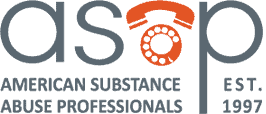By National Transportation and Safety Board
What is the problem?
Alcohol impairment remains a leading cause of highway crashes. Nearly 30 percent of the 37,000 deaths on U.S. roads in 2017 were due to alcohol impairment, according to the National Highway Traffic Safety Administration (NHTSA). Every day, nearly 29 people in the U.S. die in alcohol-impaired crashes—that’s 1 person every 50 minutes.
We know that a per se 0.08 percent blood alcohol concentration (BAC) limit is just too high. Our 2013 Reaching Zero report concluded that BAC levels as low as 0.01 have been associated with driving related performance impairment, and levels as low as 0.05 percent have been associated with significantly increased risk of fatal crashes. Our report also examined other countermeasures, such as high-visibility enforcement operations, DUI courts, and all-offender ignition interlock laws, and determined that those are also effective in eliminating alcohol-impaired driving.
“Driving under the influence” doesn’t just include impairment by alcohol. Consumption of any mood- or mind-altering substance can leave a driver impaired. Drugged driving, which includes the use of illicit drugs, prescription, and over-the-counter medications, is on the rise in the U.S.—at even greater rates than that of alcohol-impaired driving. In NHTSA’s National Roadside Survey, conducted in 2013– 2014, 22 percent of drivers surveyed tested positive for some drug or medication. NHTSA’s Fatality Analysis Reporting System (FARS) data identified the presence of drugs in 30 percent of fatally injured drivers with valid drug test results in 2006, in 37 percent in 2009, and in 46 percent in 2015.
More states are moving to legalize recreational marijuana. A 2018 study by the Insurance Institute for Highway Safety showed an increase in collision claims in some states that legalized recreational marijuana, compared to neighboring states that did not change their laws.
Unlike for alcohol, no standardized drug-testing protocol exists, and there is no established limit or threshold to determine drug impairment. Evaluating the impact of other drugs on drivers is challenging because many drugs impair individuals differently than alcohol, and there are hundreds of different drugs—illicit and legal—available to users. Additionally, data on drug-impaired driving is incomplete and inconsistent.
What can be done?
Alcohol- and other drug-impaired driving is 100 percent preventable. Stronger laws and increased enforcement are needed to prevent alcohol-impaired driving, and standardized drug testing and methodology are needed to prevent other drug impairment in transportation. We cannot fully understand the scope of drug-impaired driving without the data that would emerge from having a common standard of practice for drug toxicology testing.
Drug impairment must be treated and handled concurrently, yet separately, from alcohol impairment. A combination of legislation, enforcement, and education, at all levels of government and in all communities, is the only way to tackle this challenging problem.
To address the problem of impairment on our roadways, the following actions should be taken.
States
Establish a per se BAC limit of 0.05 percent or lower for all drivers who are not already required to adhere to lower BAC limits. In December 2018, Utah became the first state to enact a per se BAC limit of 0.05 percent. More than 100 countries have some type of 0.05 percent or lower BAC law, resulting in lower rates of alcohol-related roadway deaths.
Include in your impaired-driving prevention plan or highway safety plan provisions for conducting high-visibility enforcement of impaired driving laws using passive alcohol-sensing technology during law enforcement contacts, such as routine traffic stops, saturation patrols, sobriety checkpoints, and accident scene responses. Thirteen states currently do not conduct sobriety checkpoints.
Require the use of alcohol ignition interlock devices for all individuals convicted of driving while intoxicated (DWI) offenses. Currently, 31 states have all-offender ignition interlock laws.
Regulators
Develop and disseminate to appropriate state officials a common standard of practice for drug toxicology testing, including the circumstances under which tests should be conducted, a minimum set of drugs for which to test, and cutoff values for reporting the results.
Seek legislative authority to award incentive grants for states to establish a per se BAC limit of 0.05 percent or lower for all drivers who are not already required to adhere to lower BAC limits.
Develop and disseminate to the states best practices for DWI courts.
Industry
Accelerate widespread implementation of Driver Alcohol Detection System for Safety technology (a technology that can detect driver alcohol use) by defining usability testing that will guide driver interface design, and by implementing a communication program that will direct driver education and promote public acceptance.
Drivers
Become informed about the effects of drugs and alcohol on driving. Abstain from drinking or taking other drugs if you will be driving, or designate a sober driver.
Consider the effects of your prescription medicine on your driving. It could be making you drowsy or otherwise reducing your decision making abilities. Ask your doctor about the impairing effects of any medications you are prescribed.
NTSB. (2019). End alcohol and other drug impairment – highway. Retrieved from https://www.ntsb.gov/safety/mwl/Pages/mwlfs-19-20/mwl5-fsh.aspx




